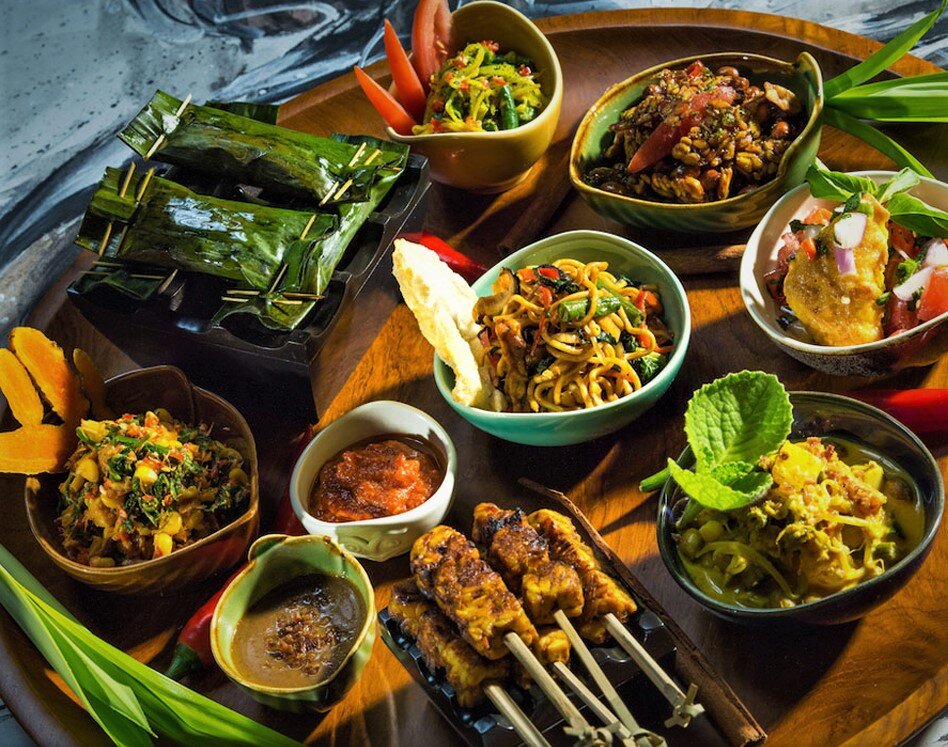Welcome to an enchanting land of natural beauty and rich cultural heritage, where a vast expanse of coastline unfolds like a tapestry, dotted with a multitude of magnificent earth formations. Embark on an unforgettable journey to discover the hidden treasures nestled within the captivating archipelago of Indonesia.
From pristine beaches kissed by azure waters to towering cliffs that defy gravity, Indonesia boasts an awe-inspiring coastline that stretches endlessly. With its diverse ecosystems and vibrant marine life, this tropical paradise offers an unparalleled escape into a world of enchantment and exploration. Brace yourself for an immersive experience as we delve into the mesmerizing tales that unravel with each step along the Indonesian coastline.
As you traverse the captivating shores of this archipelago, let your senses be overwhelmed by the symphony of colors and fragrances that fill the air. Feel the soft grains of sand beneath your feet as you stroll along secluded beaches, where the rhythmic waves play a soothing melody. Indulge in the tantalizing flavors of local cuisine, a fusion of indigenous spices that awaken and delight the palate, reflecting a legacy shaped by centuries of cultural exchange.
Exploring the Lush and Vast Coastal Beauty of Indonesia’s Archipelago
Indonesia, a nation comprised of numerous islands, beckons adventurers and nature enthusiasts to embark on an unforgettable journey along its exquisite coastline. With an extensive shoreline stretching across thousands of miles, this tropical paradise offers an abundance of opportunities to explore its diverse landscapes and experience the enchantment of the archipelago’s coastal wonders.
Delve into the mesmerizing wonders of Indonesia’s coastal regions, where azure waters lap against pristine beaches and lush foliage hugs towering cliffs. Immerse yourself in the vibrant marine ecosystems that thrive in the crystal-clear waters, teeming with an array of colorful coral reefs and exotic marine life.
Embark on a thrilling coastal adventure as you navigate through secluded coves and secret bays tucked away in the archipelago’s remote corners. Discover hidden lagoons framed by dramatic limestone formations, providing idyllic settings to unwind and indulge in the tranquility of nature.
Indulge in the rich cultural heritage that awaits at the coastal villages and towns scattered along the shoreline. Interact with friendly locals and immerse yourself in their traditional customs, savoring the unique flavors of Indonesian cuisine and witnessing captivating traditional performances.
As the sun sets, indulge in the breathtaking beauty of the archipelago’s coastal vistas. Witness vibrant hues painting the sky, casting a magical glow upon the glistening waters, and creating a picturesque backdrop for a romantic beachside stroll.
Whether seeking thrilling water sports, rejuvenating relaxation, or awe-inspiring natural wonders, Indonesia’s extensive coastline promises an unforgettable exploration of the archipelago’s breathtaking beauty. Embark on an unparalleled journey and create lasting memories as you unravel the secrets and treasures that lie along the mesmerizing coastal tapestry of Indonesia.
Geography and Topography: Understanding Indonesia’s Island Formation
Indonesia, known for its vast archipelago and extensive coastline, is a country composed of numerous islands that have been formed through various geographical and topographical processes. The unique geography and topography of Indonesia have played a significant role in shaping the formation and distribution of its islands.
Diverse Geological Origins
Indonesia’s islands showcase a diverse range of geological origins, contributing to the country’s rich natural diversity. These islands have been formed as a result of plate tectonics, volcanic activities, and sedimentation over millions of years. The interaction between different tectonic plates, such as the Indian-Australian Plate and the Eurasian Plate, has led to the formation of various types of islands in Indonesia.
Varied Topographical Features
The topography of Indonesia’s islands varies greatly, with rugged peaks, fertile plains, dense rainforests, and expansive coastal areas. The country is home to numerous active volcanoes, including Mount Bromo and Mount Krakatoa, which have shaped the landscape and contributed to the formation of new islands through volcanic eruptions and subsequent landmass deposition.
- Mountainous Regions: Indonesia’s islands, such as Sumatra and Papua, feature majestic mountain ranges that run through their interiors, offering breathtaking landscapes and challenging terrains for adventurers.
- Coastal Lowlands: The coastal regions of Indonesia, like Java and Bali, exhibit vast lowland areas that are highly populated and renowned for their cultural richness.
- Coral Reefs and Marine Ecosystems: The archipelago’s islands, including the Raja Ampat Islands and Komodo Island, house thriving coral reefs and diverse marine ecosystems, attracting both local and international marine enthusiasts.
Understanding the geographical and topographical characteristics of Indonesia is crucial in comprehending the formation and distribution of its islands. Each island holds a unique story and offers distinct natural wonders, making Indonesia a captivating destination for explorers and nature enthusiasts.
A Treasure Trove of Islands: Discovering the Count of Islands in Indonesia
Embark on a fascinating journey to uncover the incredible multitude of islands that adorn the Indonesian archipelago, a hidden gem nestled in the vast expanse of the Pacific Ocean. Delve into the enchanting diversity that awaits, as we traverse the sparkling turquoise waters and lush tropical landscapes of this mesmerizing archipelagic nation.
Unveiling the Varied Archipelago
Venture into Indonesia’s expansive maritime territory, where every corner reveals a breathtaking tapestry of islands waiting to be explored. From the alluring karst formations of Raja Ampat to the pristine white-sand beaches of Bali, each island offers a unique charm and allure that will leave you in awe. The archipelago is a cornucopia of natural beauty, with a myriad of landscapes, flora, and fauna awaiting you at every turn.
Counting the Unnumbered Isles
Though a precise count is elusive, it is estimated that Indonesia is home to thousands upon thousands of islands. These island gems collectively form the largest archipelago in the world, spanning over countless nautical miles. Discover the vastness of this coastal paradise as you navigate through its hidden bays, coves, and breathtaking coastlines, where every curve holds the promise of a new island waiting to be discovered.
Indonesia’s islands offer a symphony of cultures, traditions, and histories. Explore the vibrant markets of Jakarta, immerse yourself in the ancient temples of Yogyakarta, or dive into the ancient traditions of the Batak people in Sumatra. Wherever your journey takes you, the islands of Indonesia will enchant you with their mystical allure and leave an indelible mark on your soul.
So pack your bags and get ready to embark on an odyssey through Indonesia’s island paradise. With each step, you will unlock the secrets of this archipelago, revealing its countless islands and immersing yourself in a treasure trove of natural wonders and cultural riches unlike anywhere else on Earth.
Wildlife and Biodiversity: Coastal Ecosystems Exploration
The coastal ecosystems of Indonesia offer a rich and diverse range of wildlife and biodiversity. These unique environments support a variety of species and provide essential habitats for many marine and terrestrial organisms.
Diverse Marine Life
Indonesia’s coastal ecosystems boast a vast array of marine life, including colorful coral reefs, tropical fish, dolphins, and sea turtles. These thriving ecosystems provide a haven for marine organisms, promoting biodiversity and sustaining the fragile balance of underwater ecosystems.
Tropical Rainforests and Mangroves
Beyond the coastline, Indonesia’s coastal ecosystems extend into lush tropical rainforests and mangrove forests. These diverse habitats support a wide range of flora and fauna, including various species of monkeys, birds, insects, and plants. The complex networks of mangrove forests not only protect the coastal areas from erosion but also serve as crucial nurseries for various marine species.
The coastal ecosystems of Indonesia serve as critical breeding grounds and migration routes for numerous bird species, providing an ideal environment for birdwatching and ornithological research. Additionally, these ecosystems are home to endangered species such as the orangutans in Borneo and Sumatra, as well as the Javan rhinoceros and Sumatran tigers, making them globally significant for conservation efforts.
Furthermore, the coastal ecosystems along Indonesia’s extensive coastline play a vital role in supporting local communities and economies. They provide a livelihood for fishermen, a source of tourism revenue, and serve as natural buffers against coastal erosion and natural disasters.
It is crucial to protect and conserve these coastal ecosystems to ensure the sustainability of Indonesia’s rich wildlife and biodiversity. Efforts such as creating marine protected areas, implementing sustainable fishing practices, and raising awareness about the importance of these ecosystems are essential for their preservation.
Popular Island Destinations: Must-Visit Islands in Indonesia
When it comes to exploring the diverse beauty of Indonesia, there are numerous captivating island destinations that should not be missed. These enchanting islands offer a range of unique experiences, from pristine beaches and crystal-clear waters to lush tropical rainforests and vibrant cultural heritage.
1. Enchanting Bali
Bali, often referred to as the “Island of the Gods,” is a popular destination known for its stunning landscapes, ancient temples, and vibrant arts scene. Visitors can explore breathtaking rice terraces, dive into vibrant coral reefs, or immerse themselves in traditional Balinese ceremonies and rituals.
2. Exotic Lombok
Lombok, situated next to Bali, offers a more tranquil and untouched experience. With its stunning beaches, lush green landscapes, and towering Mount Rinjani, this island is an ideal destination for nature lovers and adventure enthusiasts. Visitors can enjoy hiking, surfing, or simply relaxing on pristine beaches.
3. Pristine Raja Ampat
For those seeking an extraordinary underwater adventure, Raja Ampat is a must-visit destination. Located in West Papua, this archipelago is home to the richest marine biodiversity on the planet. Snorkeling or diving in these crystal-clear waters will unveil a mesmerizing array of colorful coral reefs and unique marine species.
4. Cultural Yogyakarta
Yogyakarta, located on the island of Java, offers a rich cultural experience combined with fascinating historical sites. Visitors can explore the majestic Borobudur Temple, witness traditional Javanese art performances, and immerse themselves in the vibrant local arts and crafts scene.
5. Serene Gili Islands
The Gili Islands, comprising three small islands off the coast of Lombok, offer a tranquil and idyllic escape from the hustle and bustle of everyday life. With no motorized vehicles allowed, these islands provide a serene atmosphere for snorkeling, diving, or simply relaxing on pristine beaches.
- 6. Majestic Komodo National Park
- 7. Exquisite Flores
- 8. Tempting Nusa Penida
- 9. Remote Derawan Islands
- 10. Tropical Togean Islands
Indonesia’s captivating islands provide a myriad of experiences, each waiting to be explored. Whether it’s the cultural richness of Bali or the pristine nature of Raja Ampat, these must-visit islands offer unforgettable adventures and breathtaking beauty.
Cultural Significance: Indigenous Communities and their Connection to the Coastline
The rich maritime heritage of Indonesia’s diverse archipelago extends beyond its multitude of islands and the exploration of its extensive coastline. The cultural significance lies in the deep-rooted connection between the indigenous communities and the coastal regions, where traditions, knowledge, and way of life have flourished for centuries.
Indigenous communities along the Indonesian coastline have developed unique relationships with the sea, relying on it for sustenance, trade, and cultural practices. The coastline acts as a gateway connecting these communities to a vast marine ecosystem that has shaped their identity and provided them with valuable resources. The coastal regions serve as vibrant hubs of cultural exchange, where traditions are passed down through generations and practices related to fishing, boatbuilding, and seafaring are honed.
Furthermore, the coastal areas are home to a diverse range of indigenous peoples, each possessing their own distinct cultural heritage and traditional knowledge. These communities have an intimate understanding of the coastal ecosystems, including the tides, currents, and marine life, which is reflected in their sustainable practices and resource management techniques. Their profound respect for nature and the interconnectedness of all living beings not only sustains their communities but also serves as a valuable model for conservation and environmental stewardship.
The cultural significance of indigenous communities and their connection to the coastline is also embodied in their artistic expressions, folklore, and rituals. The coast serves as a source of inspiration for music, dance, and storytelling, with narratives often reflecting the relationship between the people and the sea. Through these cultural practices, the communities strive to preserve their heritage and instill a sense of belonging among younger generations.
Highlighting the cultural significance of indigenous communities and their connection to the coastline is crucial for not only understanding the unique identity of Indonesia but also for promoting sustainable development and conservation efforts. By recognizing and respecting the knowledge, traditions, and practices of these communities, we can work towards preserving the rich cultural tapestry that thrives along Indonesia’s extensive coastline.
Economic Impact: Tourism and Fishing Industries in the Archipelago
In this section, we will explore the profound economic impact that the tourism and fishing industries have on the diverse archipelago of Indonesia. By closely examining these sectors, we can understand their significance in contributing to the development and growth of local communities, as well as the economy as a whole.
Tourism Industry: Driving Economic Growth
The tourism industry in the archipelago plays a vital role in driving economic growth. With its picturesque landscapes, rich cultural heritage, and diverse marine life, Indonesia has become a popular destination for both domestic and international tourists. The influx of tourists brings in significant revenue, contributing to job creation, infrastructure development, and the overall prosperity of the local communities.
Furthermore, the tourism industry contributes to the preservation and promotion of Indonesia’s cultural heritage. Tourists are drawn to the unique traditions, historical sites, and vibrant arts and crafts of the archipelago. This interest fosters cultural exchange and provides an opportunity for the preservation of traditional practices and customs.
Fishing Industry: Supporting Livelihoods and the Economy
The fishing industry in the archipelago is another integral component of the economy, supporting the livelihoods of many coastal communities. Indonesia is known for its vast marine resources, providing abundant opportunities for fishing and aquaculture. This industry not only serves as a source of income for fishermen but also contributes to the availability of seafood domestically and internationally.
Additionally, the fishing industry plays a crucial role in maintaining the balance of marine ecosystems. Sustainable fishing practices and regulations help preserve the biodiversity of the archipelago’s waters, ensuring the long-term viability of the industry and the protection of the environment.
Overall, the tourism and fishing industries have a significant economic impact in the archipelago of Indonesia. While tourism drives economic growth through its contribution to job creation, infrastructure development, and cultural preservation, the fishing industry supports livelihoods and sustains marine ecosystems. Recognizing the importance of these sectors can lead to effective policies and strategies that will further enhance their positive impact on the archipelago’s economy.
Conservation Efforts: Achieving a Balance Between Development and Safeguarding the Coastal Environment
Across the vast expanse of Indonesia, where the seas meet the land, a profound effort is underway to strike a delicate equilibrium between advancing development and preserving the valuable coastal ecosystems. As the nation grapples with the need for progress and economic growth, it also recognizes the crucial importance of protecting its natural heritage for the benefit of current and future generations.
Promoting Sustainable Tourism
In order to ensure the long-term preservation of Indonesia’s coastal environment, various measures are being implemented to promote sustainable tourism practices. By encouraging responsible and eco-friendly tourism activities, the country aims to minimize the negative environmental impact of visitors while still allowing them to experience the unique beauty of its coastal regions. This involves regulating visitor numbers, promoting awareness of conservation issues, and supporting local communities in developing sustainable tourism initiatives.
Conservation and Biodiversity Protection
Recognizing the incredible biodiversity found within its coastal areas, Indonesia is actively engaged in conservation efforts to protect and sustain these ecosystems. Through the establishment of marine protected areas, the country aims to safeguard vulnerable habitats, preserve important breeding grounds, and promote the recovery of threatened species. These conservation areas are closely monitored and managed to ensure that ecological balance is maintained, and sustainable fishing practices are adopted to support both the livelihoods of communities and the health of the marine environment.
| Conservation Strategies | Benefits |
|---|---|
| Community-based conservation projects | Empowers local communities and promotes their active involvement in protecting the coastal environment |
| Restoration of degraded coastal areas | Enhances biodiversity and ecological resilience, providing habitats for marine species |
| Educational programs and awareness campaigns | Encourages responsible behavior, fostering a sense of stewardship towards the coastal environment |
| Implementation of sustainable fishing practices | Promotes the long-term viability of fisheries and ensures the preservation of marine resources |
The conservation efforts being undertaken in Indonesia demonstrate a commitment to balancing development and the preservation of the coastal environment. By adopting sustainable practices and engaging local communities, the nation is working towards a future where economic growth coexists harmoniously with the protection of its natural treasures.
Q&A: How many islands in indonesia
What is the exact number of islands in Indonesia according to the Indonesian government?
The Indonesian government has registered over 17,000 islands with the United Nations, though the exact number may vary due to geographical and tidal changes.
Which is the largest island in Indonesia, and how is it shared with other countries?
The island of New Guinea is Indonesia’s largest island, shared with Papua New Guinea to the east. The Indonesian portion is known as Papua.
How does Indonesia rank in terms of its size as an archipelagic country globally?
Indonesia is the world’s largest archipelagic country, spanning across Southeast Asia and Oceania.
What are the major islands of Indonesia that are most populous or densely populated?
Java is the most populous island in Indonesia, and one of the most densely populated areas in the world.
How does the Republic of Indonesia’s location near the equator affect its climate and biodiversity?
Being near the equator, Indonesia has a tropical climate that contributes to its rich biodiversity, making it one of the most diverse environments globally.
Can you name the capital city of Indonesia and its significance in the archipelago?
The capital city of Indonesia is Jakarta, located on the island of Java. It is the country’s economic, cultural, and political center.
What languages are spoken in Indonesia, and what is the official language?
Bahasa Indonesia is the official language of Indonesia, though there are over 700 indigenous languages spoken across the archipelago.
Which Indonesian island is known for its unique Hindu culture and as a major tourist destination?
Bali is renowned for its Hindu culture, beautiful landscapes, and as a major tourist destination, distinct from the predominantly Muslim culture in other parts of Indonesia.
How has the Indonesian archipelago’s position on the Ring of Fire affected its geography and natural resources?
Indonesia’s position on the Ring of Fire has resulted in significant volcanic activity, shaping its landscape and providing fertile soil that supports a wealth of natural resources.
What challenges does Indonesia face due to its archipelagic nature and high number of islands?
Indonesia faces challenges in terms of infrastructure development, inter-island connectivity, environmental conservation, and managing the impacts of climate change, such as rising sea levels and natural disasters.
How does the Republic of Indonesia share the island of Borneo with Malaysia and Brunei?
The island of Borneo is divided among three countries: Indonesia, where it’s known as Kalimantan, Malaysia, and the sovereign state of Brunei. Indonesia occupies the largest portion of the island.
What are the Maluku Islands known for in the context of Indonesian history and geography?
The Maluku Islands, historically known as the Spice Islands, are renowned for their significant role in the early global spice trade, which attracted European colonizers like the Dutch East India Company.
Can you explain the significance of Sulawesi in Indonesia’s archipelago?
Sulawesi is one of Indonesia’s four major islands, known for its unique shape, diverse ecosystems, and cultural heritage, including the Toraja highlands with their distinctive traditional houses and funeral rites.
Who is the current President of Indonesia, and what is their role in the island nation?
As of my last update in April 2023, Joko Widodo was the President of Indonesia, serving as the head of state and government, and responsible for overseeing the country’s administration and policy direction.
What does the term “Dutch East Indies” refer to in the history of Indonesia?
The Dutch East Indies refers to the archipelago’s period under Dutch colonial rule from the 17th century until Indonesia’s declaration of independence in 1945.
How does Indonesia, as the largest island nation, manage its numerous islands and maritime territory?
Indonesia manages its extensive archipelago and maritime territory through various governmental bodies, including the Ministry of Marine Affairs and Fisheries, focusing on conservation, maritime resources, and ensuring the sustainable development of its islands.
Regarding the law of the sea, how has Indonesia been affected by international maritime conventions?
Indonesia, as an archipelagic state, actively participates in international maritime conventions like the United Nations Convention on the Law of the Sea, which helps to establish its rights and responsibilities over its territorial waters and exclusive economic zone.
What challenges does the Indonesian National Institute of Aeronautics and Space face in monitoring the country’s vast area?
The National Institute of Aeronautics and Space (LAPAN) faces challenges in monitoring Indonesia’s vast area, including tracking environmental changes, natural disasters, and managing satellite technology to cover the extensive and remote areas of the archipelago.
How many islands exactly does Indonesia have, and why does this number fluctuate?
The exact number of islands in Indonesia fluctuates around 17,000 due to changes caused by natural phenomena such as high tide and erosion, as well as the ongoing process of identification and verification by the Indonesian government.
What historical significance do the islands of Sumatra hold for Indonesia?
Sumatra, one of Indonesia’s largest islands, has historical significance as a trading hub and for its rich natural resources. It was an integral part of the ancient maritime spice route and played a crucial role in the spread of Islam in Southeast Asia.






